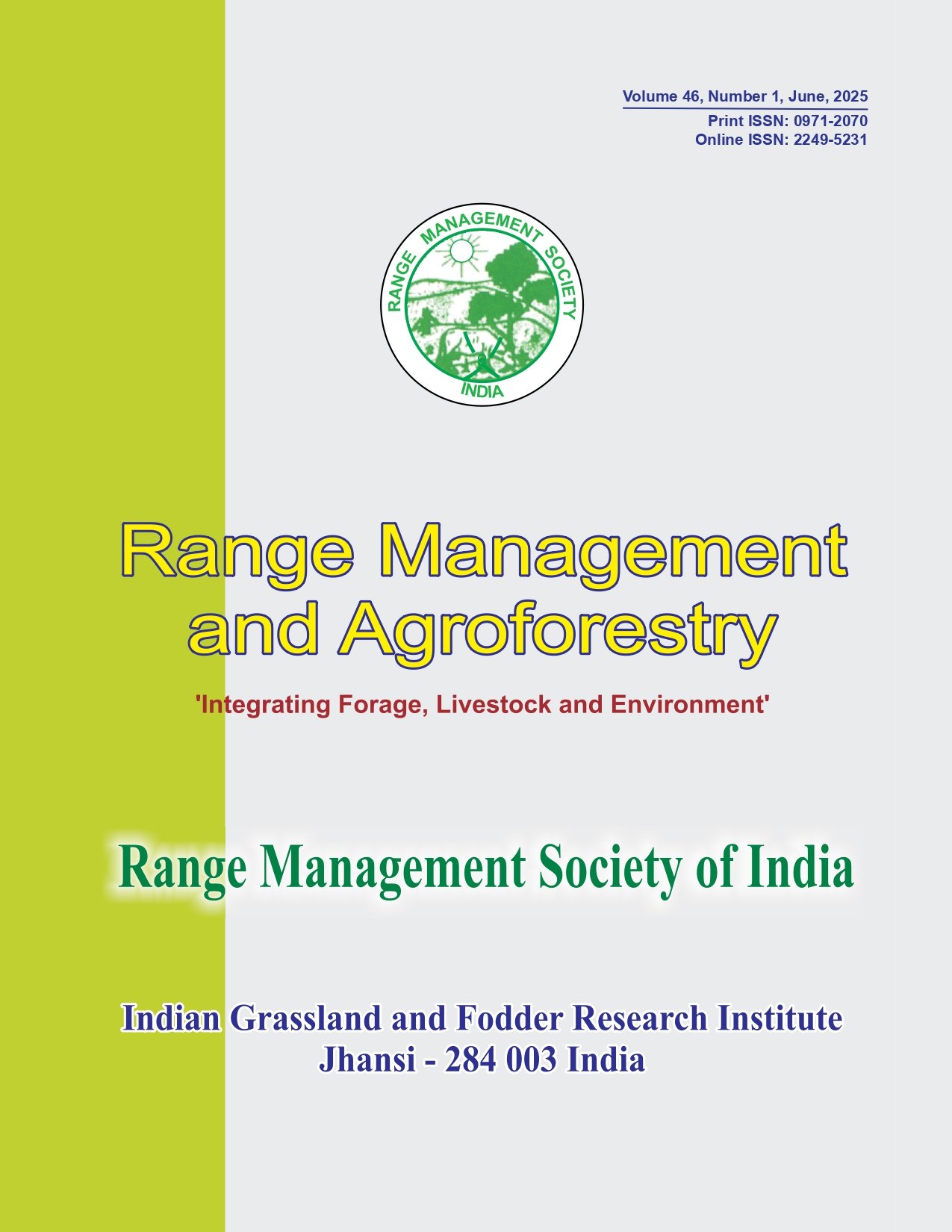Genetic variability and multivariate analysis on oats (Avena sativa L.) genotypes grown for fodder
DOI:
https://doi.org/10.59515/rma.2025.v46.i1.22Keywords:
Oats, Variability, Genetic diversity, Hierarchical clustering, PCAAbstract
Oats (Avena sativa L.), widely cultivated for grain, also provide quality green herbage for livestock. In Rabi 2021–22, 31 genotypes were evaluated for genetic diversity using univariate and multivariate analyses. Significant differences were found across all 12 recorded traits, including fodder yield. High genotypic and phenotypic coefficients of variation (GCV and PCV), heritability (h2b), and genetic advance as a percentage of mean (GAM %) were noted for number of tillers per plant (NOTP), dry matter yield (DMY), and green fodder yield (GFY). GFY ranged from 0.77 kg/m² (NDO-1101) to 2.09 kg/m² (NDO-711), and DMY ranged from 0.14 kg/m² (NDO-1101) to 0.33 kg/m² (OL-1861). Hierarchical clustering grouped the genotypes into three clusters, with Cluster I showing the highest mean values for most traits, including fodder yield. Maximum intra-cluster distance (3.87) was within Cluster I, while the highest inter-cluster distance (5.71) was between Clusters I and II. Principal Component Analysis (PCA) highlighted fodder yield, NDVI, and crude protein as key contributors to genetic variation, with the first four principal components explaining 83.88% of the total variation. Genotypes NDO-711, OS-1861, and JHO-851 demonstrated high yield and crude protein potential. These genotypes merit further evaluation for desirable traits to develop elite, high-yielding varieties suitable for the Brahmaputra Valley of Assam.
Downloads
Downloads
Published
How to Cite
Issue
Section
License
Copyright (c) 2025 Parameshwaran Mathavaraj, Prasanta Kumar Goswami, Seuji Bora Neog, Kishore Kumar Sharma

This work is licensed under a Creative Commons Attribution-ShareAlike 4.0 International License.







